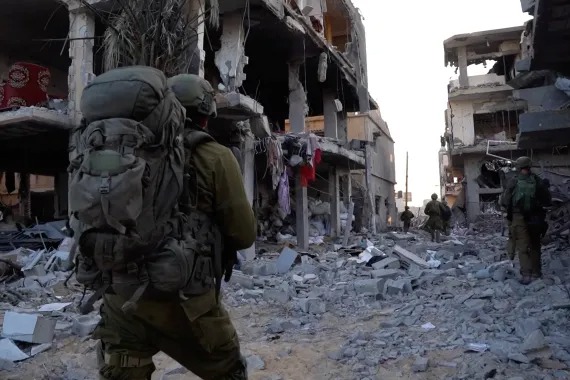In a significant development that could reshape the dynamics of the ongoing Israel-Hamas conflict, the United States has unequivocally stated its opposition to an Israeli military occupation of the Gaza Strip after the hostilities cease. The White House made its position clear through National Security Council spokesperson John Kirby, who emphasized that President Joe Biden believes “a reoccupation by Israeli forces of Gaza is not the right thing to do.” This statement comes in direct contrast to Israeli Prime Minister Benjamin Netanyahu’s recent suggestion that Israel would assume security control in Gaza for an “indefinite period.” As the situation in the region remains highly volatile, the U.S. stance has ignited conversations about the post-conflict future of Gaza and its governance.
Tensions Rise Over Gaza’s Future
In a press briefing on Tuesday, John Kirby, the national security spokesperson, underscored the need for “a healthy set of conversations about what post-conflict Gaza looks like and what governance looks like.” The message from the White House appears to be that the Gaza Strip’s future should not involve a renewed Israeli military presence, as it did prior to the hostilities. Kirby also emphasized that there was agreement between the U.S. and Israeli counterparts about what Gaza should not look like, a reference to the situation on October 6.
This sharp contrast in views between the U.S. and Israel adds to the already simmering tensions surrounding the Israel-Hamas war. It raises questions about the post-conflict landscape and how the international community, as well as regional stakeholders, will respond to this fundamental disagreement.
U.S. Supports Palestinian Autonomy
President Joe Biden’s opposition to Israeli military occupation of Gaza aligns with his earlier statement that it would be a “mistake” for Israel to occupy the territory. This stance underscores the U.S. commitment to preserving some degree of Palestinian autonomy in Gaza and avoiding a return to the conditions that preceded the current conflict.
The backdrop to this position is Israel’s recent military offensive against Hamas, which was prompted by Hamas’s deadly rampage in southern Israel. According to Israeli officials, this rampage claimed the lives of 1,400 people and took more than 230 others hostage. On the Palestinian side, the bombardment of Gaza has resulted in a devastating toll, with at least 10,328 people killed, including 4,237 children, according to Palestinian health authorities. Both Israel and Hamas have resisted international calls for a ceasefire, further complicating the prospects for a peaceful resolution.
Humanitarian Crisis Deepens
As the Israel-Hamas conflict continues to unfold, a growing humanitarian crisis in Gaza is exacerbating the already dire situation. Israel has imposed a siege on the Gaza Strip, severely restricting access to essential resources, including food, water, electricity, and fuel supplies for the more than 2.3 million people trapped in the enclave. The impact of this blockade has been nothing short of catastrophic for Gaza’s civilian population.
In addition to these challenges, international humanitarian efforts face obstacles. The International Committee of the Red Cross (ICRC) reported on Tuesday that a humanitarian convoy bringing medical supplies to Al-Shifa Hospital in Gaza City came under fire, resulting in a driver sustaining light injuries. The ongoing hostilities and blockade have further complicated the delivery of much-needed aid to the beleaguered region.
As the world watches the events unfold in Gaza, the question of how to address the escalating humanitarian crisis becomes ever more urgent. The U.S. stance against Israeli occupation of Gaza presents a significant development in this complex and devastating conflict, opening new avenues for diplomacy and peace negotiations.















